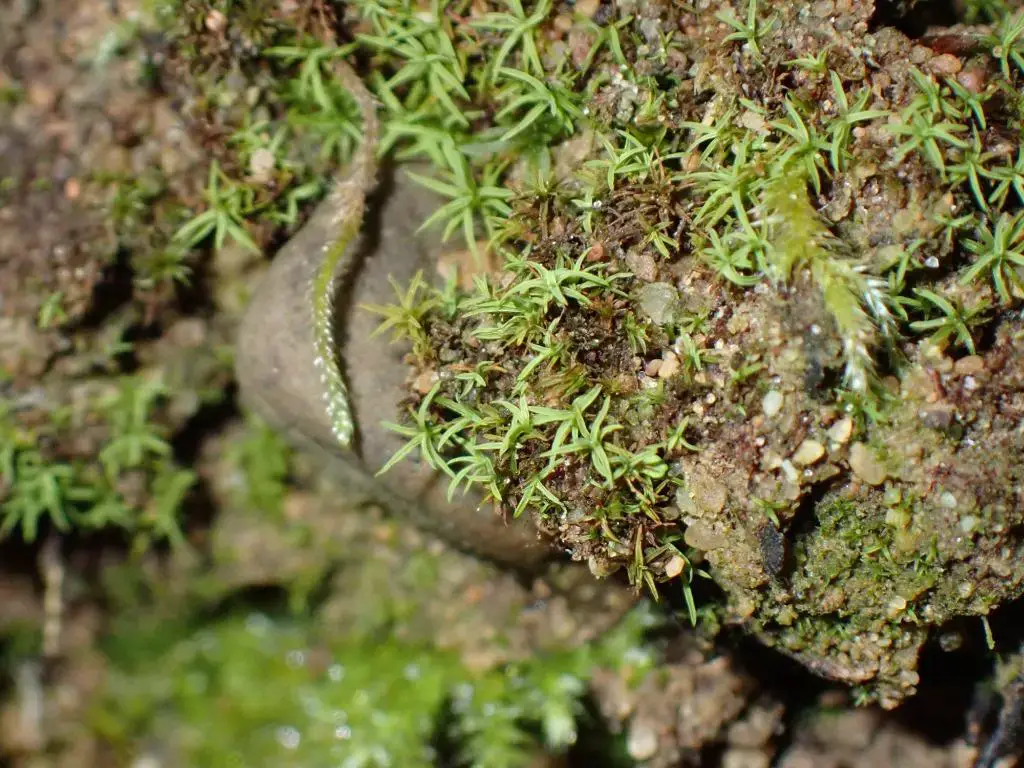
30266459393_ee911e076e.jpg from: https://www.flickr.com/photos/23980231@N07/30266459393/
Introduction
Welcome, fellow moss enthusiasts, to an enchanting exploration of the captivating world of Bryoerythrophyllum recurvirostrum var. aeneum (Müll.Hal.) R.H.Zander, a remarkable moss species belonging to the Pottiaceae family. Often referred to simply as Bryoerythrophyllum, this unassuming yet fascinating plant holds a wealth of secrets waiting to be uncovered.
Background
Before we delve into the intricacies of this moss, let’s set the stage with a brief introduction to the world of Bryophyta, the division encompassing mosses, liverworts, and hornworts. These diminutive yet resilient plants have been around for millions of years, predating even the earliest vascular plants. Despite their small stature, they play a crucial role in various ecosystems, acting as pioneers in colonizing new environments and contributing to soil formation and moisture retention.
Main Content
Morphology and Identification
Bryoerythrophyllum recurvirostrum var. aeneum is a true marvel of nature, with its delicate fronds and intricate structures. This moss species is characterized by its erect, branched stems and lanceolate leaves

32340060321_ca9def26b0_b.jpg from: https://www.flickr.com/photos/23980231@N07/32340060321/
that are recurved at the tips, giving it a distinctive appearance. The leaves themselves are keeled and papillose, adding to the plant’s unique texture.
One of the most striking features of this moss is its reddish-brown

153188.jpg from: https://www.calflora.org/app/taxon?crn=13733
coloration, which is particularly pronounced when the plant is dry. This hue is derived from the presence of pigments that protect the moss from harmful UV radiation, a remarkable adaptation for survival in harsh environments.
Global Distribution and Habitat
Bryoerythrophyllum recurvirostrum var. aeneum is widely distributed across various regions of the world, including North America, Europe, Asia, and Australia. It thrives in a diverse range of habitats, from rocky outcrops and soil banks to tree bark and decaying logs. This moss is particularly adept at colonizing disturbed areas, making it a pioneer species in many ecosystems.
Ecological Roles and Adaptations
Despite its diminutive size, Bryoerythrophyllum recurvirostrum var. aeneum plays a vital role in its respective ecosystems. As a pioneer species, it helps stabilize soil and create favorable conditions for other plants to establish themselves. Additionally, this moss serves as a microhabitat for various invertebrates, providing shelter and food sources for these tiny creatures.
One of the most remarkable adaptations of this moss is its ability to tolerate desiccation. During periods of drought, Bryoerythrophyllum

obsfoto_30146a51-1be0-49a1-a908-64fdc467b158.jpg from: https://www.naturbasen.dk/art/8444/roed-gammelblad
can enter a state of dormancy, curling up its leaves and slowing down its metabolic processes. Once moisture returns, the moss quickly revives, showcasing its incredible resilience and ability to thrive in challenging environments.
Case Studies/Examples
In a recent study conducted in the Pacific Northwest region of North America, researchers discovered a thriving population of Bryoerythrophyllum recurvirostrum var. aeneum growing on the bark of ancient Douglas fir trees. This finding highlighted the moss’s ability to colonize and persist in unique habitats, contributing to the overall biodiversity of the forest ecosystem.
Technical Table
| Characteristic | Description |
|---|---|
| Family | Pottiaceae |
| Genus | Bryoerythrophyllum |
| Species | recurvirostrum var. aeneum |
| Stem | Erect, branched |
| Leaves | Lanceolate, recurved at tips, keeled, papillose |
| Color | Reddish-brown (when dry) |
| Habitat | Rocky outcrops, soil banks, tree bark, decaying logs |
| Distribution | North America, Europe, Asia, Australia |
Conclusion
As we bid farewell to the captivating world of Bryoerythrophyllum recurvirostrum var. aeneum, we are left with a newfound appreciation for the intricate beauty and resilience of these unassuming plants. Who would have thought that such a tiny moss could hold so many wonders? Perhaps the next time you encounter a patch of moss, you’ll pause and reflect on the incredible diversity and adaptations that nature has to offer, even in the smallest of forms.
Before we part ways, ponder this: If a moss as delicate as Bryoerythrophyllum can thrive in the harshest of conditions, what other marvels might be hidden in plain sight, waiting to be discovered by the curious and observant?